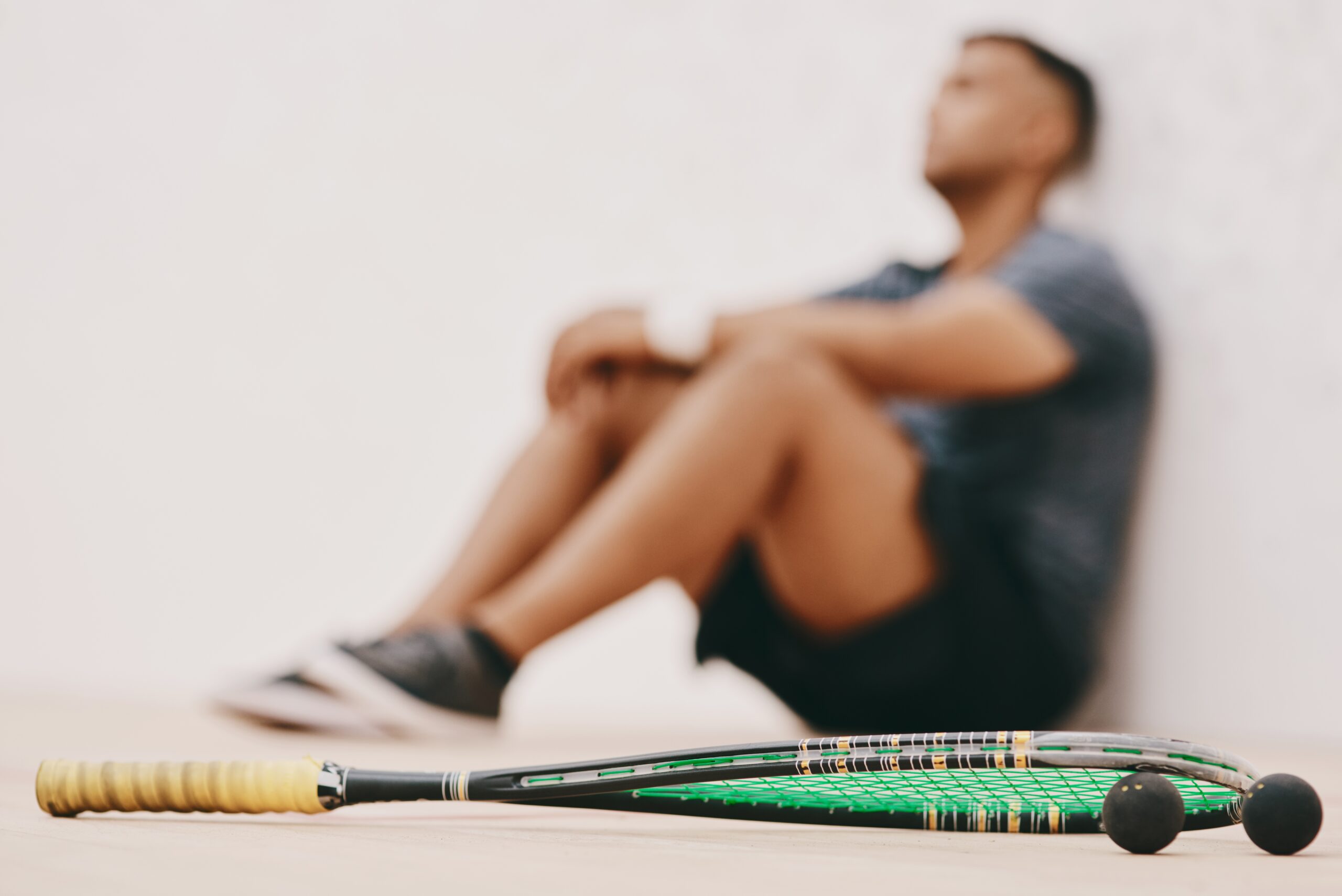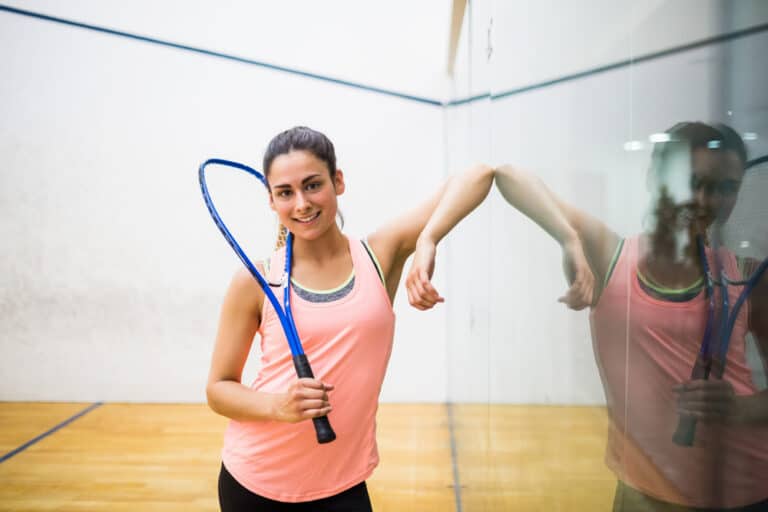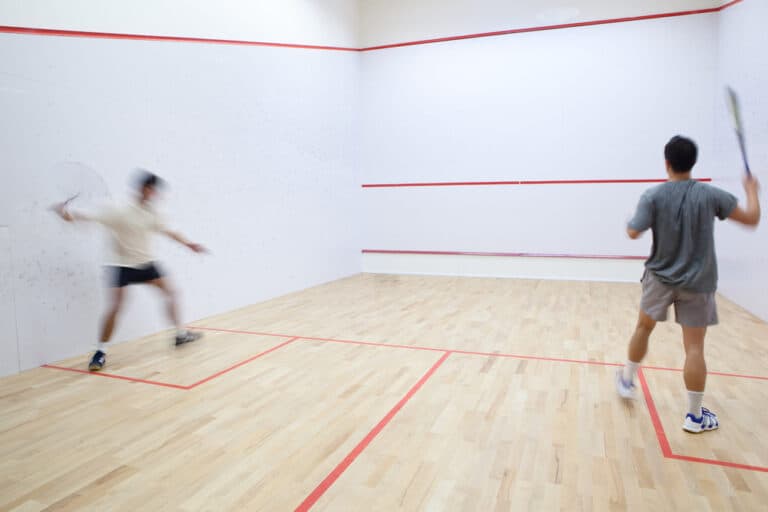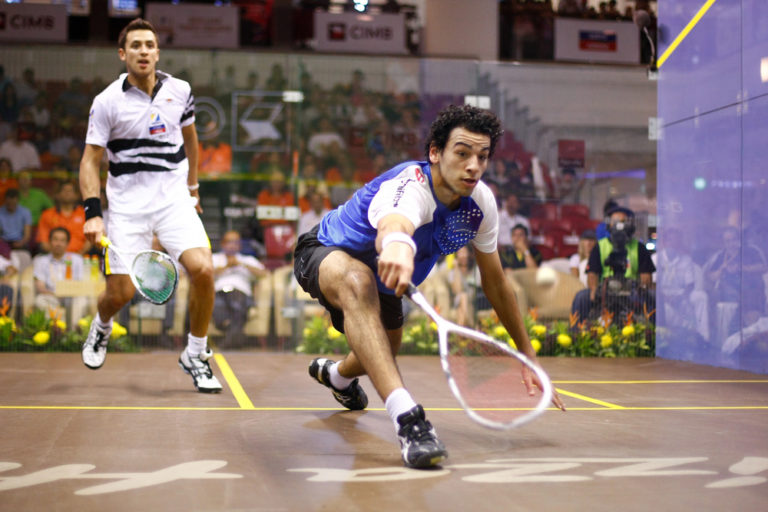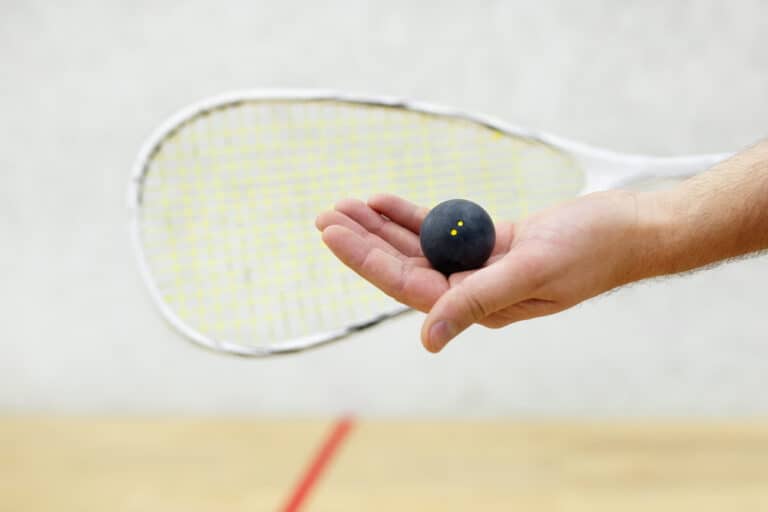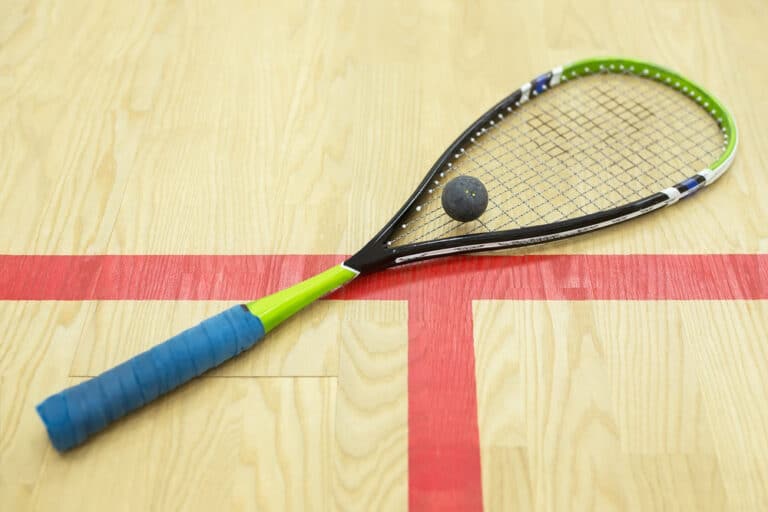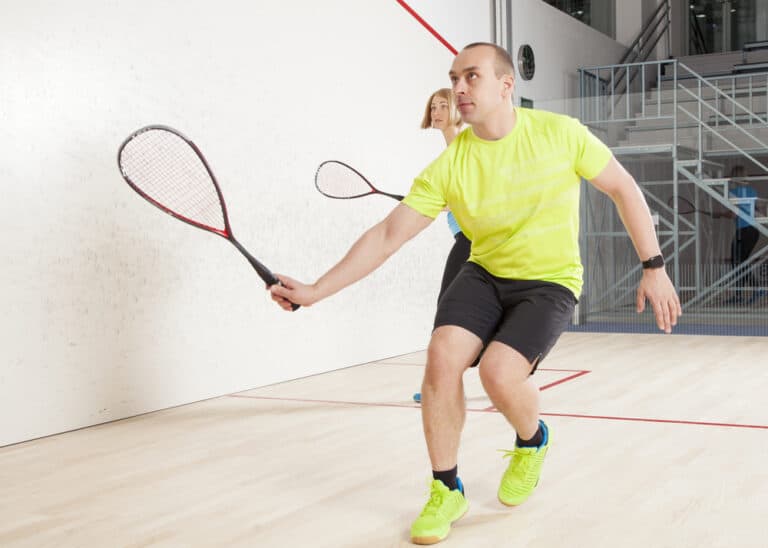Can You Play Squash Alone?
We are so used to seeing 2 players on a squash court at a time, playing either a competitive or friendly game. What happens if your opponent/friend that you intend to play squash with fails to show up for your game? Can you use the court that you have booked to play squash alone? Will the squash club or squash center even permit you to be on the court alone?
Even though squash is a game that is designed to be played by 2 people, or 4 in the case of doubles, you can play squash alone as a way to practice and improve your skills. Squash coaches have a range of practice drills that work more effectively when used by a solo player on the court.
Let’s take a closer look at the ways you can play squash alone and how you can use your alone time on the court to improve your squash skills so that you can be a better player the next time you step onto the court for a match.
Can You Play Squash Alone?
Traditionally you would play a game of squash against an opponent. However, there have been times when I have booked and paid for a court, only to have my opponent cancel at the last minute. Instead of wasting valuable court time, I have used the opportunity to get an hour of solid practice and work on my weak shots.
Naturally, you can’t play a competitive game of squash against yourself when playing alone. Similarly, you won’t be working on your match strategy to play an opponent out of position when playing alone. However, playing squash alone gives me the opportunity to work on all the training drills that I was taught by my coach and don’t get a chance to use when I’m on the court with an opponent.
One thing that I have often noticed when playing squash alone is that it is sometimes difficult to keep enough temperature in my squash ball. This is especially true if the air temperature is cold and I am focusing on my backhand drive, which is my weakest shot. Instead of stopping every few minutes from warming up the ball again, I will start the alone session on the court with a white dot ball instead of my usual yellow dot ball that I use when playing against an opponent.
Is Squash A One-Person Sport?
The sport of squash is played by two players or four players in the case of doubles. It is a racket sport played on a four-walled court with a hollow rubber ball.
In my experience, I have found playing doubles squash very difficult as the court felt too crowded. It was near impossible to avoid running into a partner or opponent, especially when moving backward and tracking the ball through the air. However, I must admit that I only tried doubles squash twice.
The nature of competitive squash is that it gets played against an opponent, so therefore squash is not a one-person sport.
As a squash player, having alone time on a squash court is an opportunity to do practice drills and improve your skills as a player.
Do You Need A Partner To Play Squash?
Technically, squash can be played as either singles or doubles, though to my mind playing doubles feels rather cramped on the court. If you intend to play doubles squash, you will need a partner on your doubles team.
If you want to play singles, you will need an opponent to play against. If you are new to an area or on vacation and want to play squash wherever you are, contact the nearest squash center or club. Many squash centers offer friendly tournaments that you will be able to join. A squash club can put you in touch with a couple of their members who could be available for a friendly game of squash.
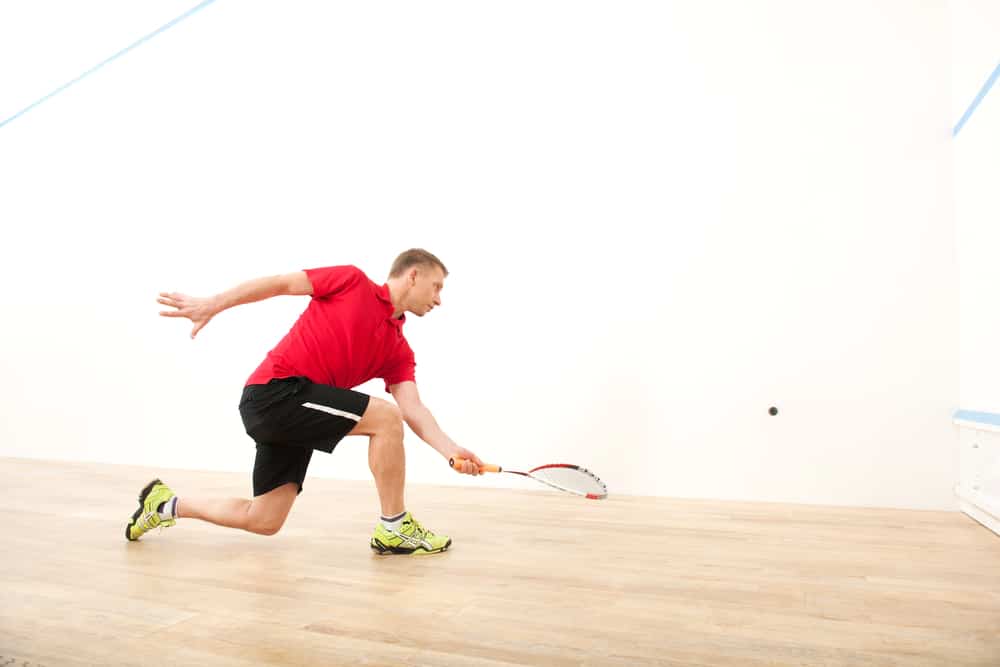
Can You Play Squash By Yourself?
Even though you cannot play a game of squash by yourself, the experienced squash players and coaches that I have spoken to have all recommended that I should put in a solo session on the court once a week so that I can improve my level.
The shortest duration that my squash club allowed us to book a court was one hour. One thing that I did notice from a 1-hour practice session on the squash court was that my arm would often feel more fatigued than after an hour on the court against an opponent because I would be hitting the ball at least twice as much.
To get the most out of your solo session on a squash court, here are five different training drills that you can use to increase your skill.
Practice Serving
Practicing your squash service is something that you can do that will make a big difference to the number of points that you win, or at least not lose to an unforced error, especially as a more novice player. Practicing your service will help you improve the accuracy of your service.
Even though you don’t have anyone to return your service, you can still practice soft lob services and harder drive services.
What I used to do was put my sweater down on the court and try and get the ball to bounce on the sweater on each service, both for lobs and drives. During the practice session, I would move the sweater to a new spot after getting the ball to land on it for 10 services.
What I did notice was that my ball would cool down quickly when practicing services. This would be even worse when practicing lots of softer lob services. My solution was to alternate practicing my service by using the figure-of-eight drill, as it warms up the ball very quickly.
Side To Side
My coach always considered the side-to-side drill to be one of the best options for solo practice on the squash court, especially for more beginner-level players who don’t yet have the skill level to master the figure-of-eight drill.
The way you do this drill is to stand in the center of the court and hit the ball toward a side wall using a forehand. Hit the ball hard enough that it will rebound over your head and hit the other side wall before bouncing. Then use a backhand to hit the ball in the opposite direction to rebound again over your head to the other side wall.
Because I have a lot more power in my forehand, I tend to start this practice drill just using my forehand until I have the ball properly warmed up and bouncing better. After a minute or two of this drill, my squash ball will be warm enough to start using my backhand.
The idea with this drill is to keep going for as long as possible without making a mistake.
One way to make this drill more difficult is to keep hitting the ball really hard after it is bouncing well and play side-to-side volleys instead of letting the ball bounce.
Drives
The idea behind drives in squash is to hit the ball so that it stays near a side wall both when you hit the ball and when it rebounds. This applies both to the forehand and the backhand side of the court.
I always start with the forehand side of the court. I work at hitting the ball down the wall tightly into the corner and hard enough that it comes back with good length to the back of the court. I keep hitting forehand drives until I either make an error or play a drive so tightly against the wall that I can’t return it. I always count the number of forehand drives that I hit.
I then move to the backhand side of the court and hit backhand drives. The principle of a backhand drive is the same as a forehand drive, except that I use a backhand and drive the ball down the wall on the backhand side of the court.
Because my backhand is a weaker shot, I tend to make more errors on the backhand. That is why I count the number of forehand drives that I play. That way, I can make sure that I play at least the same number of backhand drives before switching over to the forehand side again.
Volleys
This is another great idea for solo practice, though it can be a bit tricky the first few times you try this drill.
The idea is that you stand close to the wall and hit either forehand or backhand volleys as you gradually move backward until you end up near the back of the court while still striking volleys.
When I first did this drill, I got into the bad habit of letting my racket head hang down to play the volleys close to the wall because it was simply impossible to get my racket head back up into position in the short time that it took for the ball to rebound off the front wall.
For me, anything more than a step forward of the T was as far forward as I could move, and I still have enough time to get my racket up into position to play a proper volley.
If you are a relatively inexperienced player, try the variation to this drill that I used to use. I found that if I tried to hit a volley on every ball, I would only get 2 or 3 volleys before making an error and wasting time picking up the ball. Instead, I would hit a volley on every second shot. This means playing a volley and then letting the ball bounce so that I can tee up an easier ball for my next volley.
My method of playing a volley on every second ball allowed me to get more benefit from the drill, especially when practicing my backhand volleys.
A Figure Of Eight
This is probably the most commonly used solo squash practice among more experienced players. I found that it took me a while to get the hang of the timing.
The idea for this drill is to stand in the center of the court and hit the ball to the front wall but high up and as near the corner as possible. You hit your forehand into the front corner on the backhand side of the court. The ball will hit the front wall first, then rebound to you after hitting the side wall.
I would start by playing this drill just on my forehand and letting the ball bounce before playing the next figure of eight. Once I got a sense of the timing, I would play a backhand into the corner of the forehand side of the front wall.
The ideal way to play this drill would be to alternate between forehand and backhand on each shot. However, I’d suggest working your way up to that if you are still a relatively inexperienced squash player.
The easier way to play this drill is to let the ball bounce after each figure of eight. If you are getting a better sense of the timing, you can step up the skill level of the drill and start bringing in a few volleys in your figure-of-eight drill.
My high school squash coach would stand on the T and play the figure-of-eight drill as volleys, alternating from forehand to backhand for 2 minutes as a way to warm up a ball quickly for our training sessions. I can remember how it impressed me watching him standing on the T playing this drill without needing to move his feet more than an inch or two while switching from forehand to backhand volleys.
What Are The Benefits Of Playing Squash Alone
Squash is a sport where you can do your practice sessions either with a partner/trainer or on your own.
If you do have an opportunity to practice your squash on your own, it is vital that you plan out what you intend to do during your time on the court. I find that even 5 minutes of pre-planning makes a massive difference to how efficiently I use my limited time on the court.
I will often have a court booked for an hour when I am practicing alone. I always make sure that I get to the court between 10 and 15 minutes early so that I can do nearly all of my warmup before I get onto the court.
Once I am on the court, I’ll warm up the ball as quickly as I can. I then set a 5min timer on my phone and rotate between 5 minutes each on the side-to-side drill, volleys, drives, and figure-of-eight drill. Between each of these drills, I will use the warm and bouncy ball to practice 10 services, 5 from each side of the court.
Having this clear program eliminates wasted time on the court. This makes practicing alone more beneficial to improving my squash than practicing with a partner, as I end up hitting way more shots than I do with someone else on the court.

